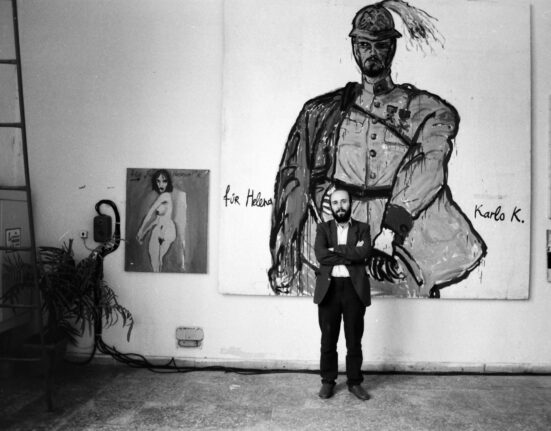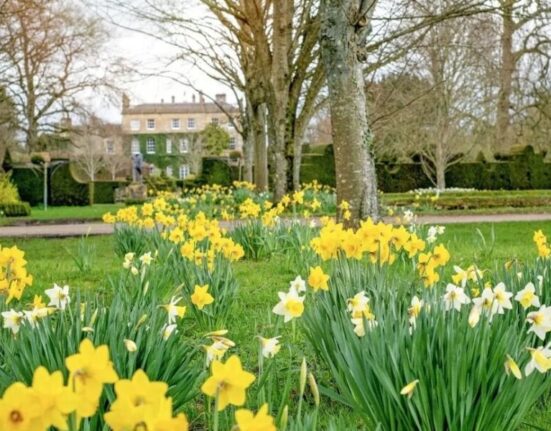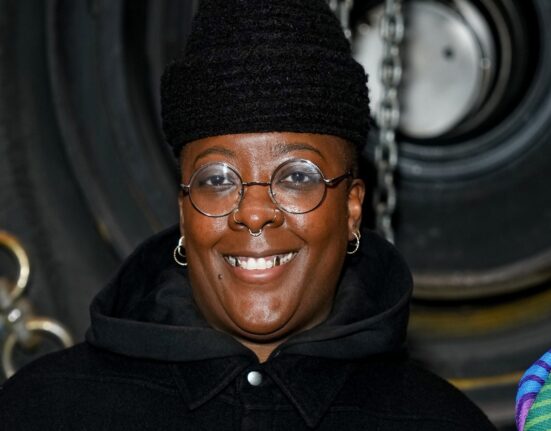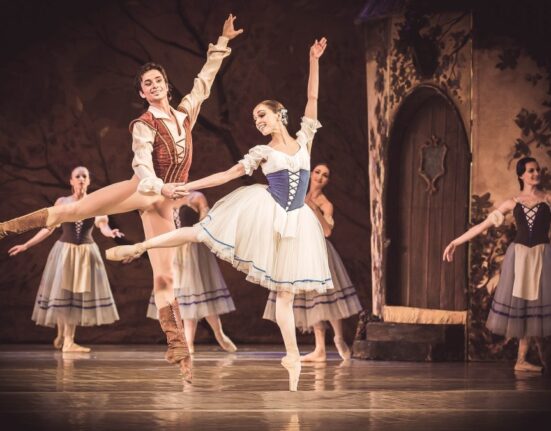If you come across some litter this April 22, you may feel called to reduce, reuse and recycle in honor of Earth Day. But discarded objects that find their way into the hands of these Long Island creatives are destined for something more: They’re reshaped, reimagined and reborn into works of art that are far greater than the sum of their reclaimed parts.
EVERY BREATH HE TAKES
When Sag Harbor resident Rossa Cole quit smoking five years ago, he started vaping. As with anything he consumes, he kept the empty cartridges instead of throwing them away, hoping, he said, to eventually incorporate them into his art. Friends got a whiff of his growing collection, and soon began dropping off their spent tanks at his Springs studio. He ended up with hundreds of the small plastic containers with their metal bits.
Then he quit vaping.
He said he stopped in October because he worried about how his longtime tobacco habit could affect his heart. “I’m not a young man anymore, so we all start to worry about our innards,” said Cole, 54, also a freelance photographer and a handyman.
That’s when it came to him what he wanted to do with the discarded parts and pieces.
This year, he created two versions of a work he titled “Vapeheart.” One depicts the symbol of a heart, the kind found in popular culture in Valentine’s Day cards, text emoji and expressive two-hand gestures. The shape is formed with 250 used-up cartridges, their caps providing a textured brown background, Cole said. The base of the 21-by-16 inch piece is scrap wood from old Ikea furniture, he said.
Cole’s two-part “Vapeheart,” made of spent vape cartridges Credit: Elizabeth Sagarin
In the other edition of “Vapeheart,” the cartridges form a three-dimensional depiction of the human heart with vintage plastic tubing springing from the organ like veins and arteries. The framework of the heart is shaped from plastic trays taken from inside a package of Oreos, he said.
“My worries tend to translate into art,” he said.
In 2010, while living in the Greenpoint section of Brooklyn, Cole began looking for refuse he could photograph in his Pencil Factory studio, starting with tree branches and twigs. Using the sticks, he fashioned a wind turbine, then an oil rig and then a Prius.
Two years later, he said he moved with his wife, Lara Sweeney, copresident of The Children’s co-presidenthe East End in Bridgehampton, and their two children to Long Island, where Cole grew up. “I . . . started noticing all the… h out here, which is mostly plastic that’s washed up from the ocean,” he said.
Today, Cole said he creates with any material that is on its way to the landfill, including art supplies like cheap, dried-out markers that no longer serve a child’s classroom’s art bin. With some of those, he produced “When Space Leaked In,” a 2024 work in a series about the atmosphere. Cole removed the felt pieces from inside the markers and soaked them in water, creating an otherworldly landscape of color on poster board set inside a broken 24-by-30-inch frame he found at a town dump. The felt turned into raised wisps that when stretched out to look like clouds. He used old black satin paint as drippings over shattered glass at the top of the frame. The end result evokes the fear he feels about the state of the environment.
“I’m worried that we’re not going to take care of the atmosphere, and that we actually didn’t, and in 100 or 200 years, space is going to find its way in,” Cole said. “We won’t have anything to breathe anymore.”
Visit @rossacoleart on Instagram for upcoming open studio dates.

Artist Cindy Pease Roe, right, founded UpSculpt in 2012 to encourage action against ocean plastic pollution. With her is the nonprofit’s director of education and outreach, Bri Sander. Credit: Randee Daddona
NATURE MEETS PLASTIC AND PLASTIC WINS
Artist Cindy Pease Roe’s creative process starts with what washes up on shore. Rope, fishing line, netting and other marine plastics are cleaned and then transformed into sculptural representations of the living things litter threatens to sicken or kill — birds, whales, sharks, fish and other fauna.
One of her most celebrated public works is “What’s Inside the Osprey Nest?” on display during better weather at Fire Island National Seashore’s Watch Hill boardwalk. The title speaks to a moment about a decade ago when following a nor’easter Roe, 65, got an intimate look inside a nest, which can usually only be seen by webcam because the endangered birds typically roost atop trees and utility poles.
The nest had toppled over in the storm, and was empty, said Roe, who divides her time between Greenport and Connecticut. She called a friend, and together they spent two hours collecting “unnatural materials” that had been used to build the nest, she said.
There were pieces of wire, an electrical cord, fishing gear, pet-waste plastic bags, boat piling, rope and aquaculture matting, Roe said. She brought it back to her art studio, and eventually worked up a design, she said. After commissioning an armature for the 2023, 40-by-65-inch life-size sculpture, she constructed the nest out of found driftwood and the osprey from the plastics she gathered.
Rope was taken apart and manipulated to look like feathers, and plastic pieces were used for the bird’s eyes, she said.

Artist Cindy Pease Roe goes through a bin caps. About 40 billion bottle caps are used in the United States yearly, one expert said. Credit: Randee Daddona
Roe said she believes the synthetic materials in the aerie had caused it to fall over.
“They’re raising a family in there, so things have got a drain,” she said. “In this case, the drainage had been stopped up by the plastic bags that had been used. And I think the integrity of the nest was compromised, and therefore, when a big storm came through, it toppled over.”
In 2012, Roe founded the nonprofit UpSculpt to raise awareness of the pollution problem, according to Bri Sander, education and outreach director of the Greenport-based organization. “The center of our mission is to empower action against the crisis of ocean plastic pollution, using art, science and educational workshops,” Sander said.
Through UpSculpt, Roe takes on consciousness-raising public and private commissions and conducts outreach through public speaking engagements and workshops in schools, museums and libraries. “We bring workshops to people of all ages, and it all centers around the act of up-sculpting,” she said.
Participants may make vases, sea creatures or wreaths, she said, all out of sea rubbish.
“It started as the mission of Cindy as an artist to use the transformative power of the sculpture that she was creating with marine plastics as an educational tool,” Sander said. “She witnessed the conversation that the art created, and she noticed how powerful that conversation was when it came to educating the public, raising awareness and really doing amazing grassroots environmental action.”
To take an UpSculpt workshop or tour the studio, visit upsculpt.com.

Leslie Sattler of Green Earth Craft with an art piece she and students at a Plainview elementary school made out of plastic lids. Credit: Newsday/Alejandra Villa Loarca
REDEEMING THE UNRECYCLABLE
Leslie Sattler takes lids and turns them into legacies.
Her Plainview-based business, Green Earth Craft, goes into schools for a week or two at a time with bags of discarded bottle caps that Sattler and students use to fabricate large mosaiclike murals that decorate campus hallways, lunchrooms and libraries for years to come.
Sattler, 58, is a textile surface designer known for fashioning designs for everything from fabric to tissue boxes to dinnerware. She said she got into upcycling bottle caps after reading that they are often not recyclable.
That’s because caps to bottles for water, soda, juice, milk and other beverages must be attached, said Anja Brandon, plastics policy director at the Ocean Conservancy, a Washington, D.C.-based environmental nonprofit, either screwed on before they hit the recycling bin or still joined with a built-in tether. “Bottle caps by themselves are too small and will get sorted out in the recycling system or lost along the way,” said Brandon.
They are, Brandon said, one of the most common types of single-use plastic pollution at beaches and in waterways, posing harm to both humans and wildlife. Some 40 billion bottle caps are used each year in the United States, she added.
Many thousands have been upcycled over the past decade in Sattler’s work in schools. Often colorful with intricate designs, the estimated 45 murals she has helped students complete in classrooms across Long Island range from depicting inspirational phrases such as “Choose Kindness” or “Create and Inspire” to large-scale school logos.
Most of the time, Sattler has students write their names on the insides of the caps, she said.
If a mural design calls for it, Sattler paints backgrounds. Each of the four panels of a 4-by-8-foot topiary at Plainview’s Judy Jacobs Parkway Elementary School, which her now-adult son and daughter attended, contains an ombre background representing the seasons in shades of blue, green, red and yellow. The bottle caps aren’t painted, she said. Caps come in a wide range of colors, something Sattler discovered after she embarked on her mission to make what she describes as art “Mother Nature can be proud of.” The tree trunks in the polyptych are composed of brown pharmaceutical caps her friend, who works at a nearby hospital, gives her.
Sattler, a former art director at Driftwood Day Camp in Melville, also teaches hands-on classes at libraries where children might create musical instruments, gardens or robots out of recycled materials.
“If I’m working with kids and I teach them that they can make something out of ‘garbage,’ and then they go and do that on their own,” said Sattler, “then I think that we’ve made the world slightly cleaner. It may not make a huge difference, but over the course of everyone doing that, it does make a difference.”
To learn more about Sattler and her work, visit greenearthcraft.com.






